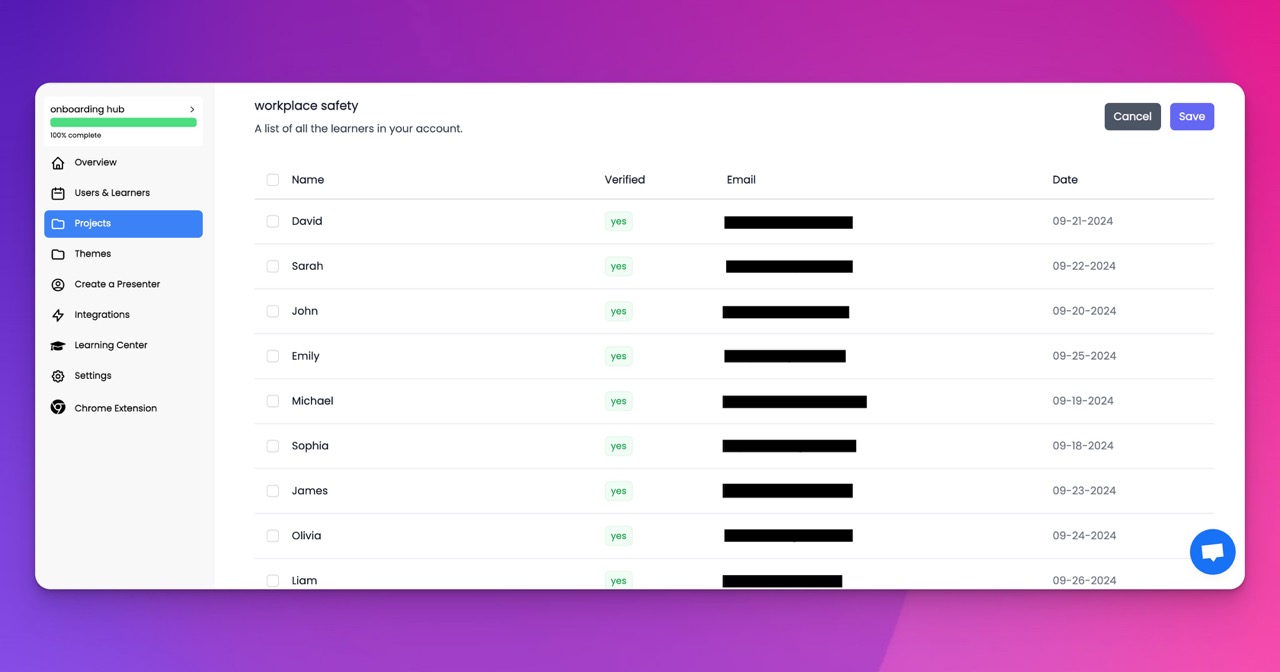🎉 Trainday now integrates with Zendesk and Hubspot 🎉 Trainday now integrates with Zendesk and Hubspot 🎉 Trainday now integrates with Zendesk and Hubspot
🎉 Trainday now integrates with Zendesk and Hubspot
🎉 Trainday now integrates with Zendesk and Hubspot
Contact
Banking
The Power of Employee Advocacy in Enhancing Banking Retention
The Power of Employee Advocacy in Enhancing Banking Retention: Leveraging Data and Artificial Intelligence for Efficient Training
In today's competitive banking industry, retaining customers has become increasingly challenging. However, one effective way to strengthen customer loyalty and improve banking retention is through the power of employee advocacy. By utilizing data and artificial intelligence (AI) to develop targeted and timely employee training courses, financial institutions can equip their workforce with the knowledge and skills needed to deliver exceptional customer experiences. In this blog post, we will explore how data and AI can play a pivotal role in enhancing employee training and ultimately improving banking retention rates.
The Role of Data in Identifying Training Needs:
Data is a valuable asset that can provide deep insights into customer behavior, preferences, and pain points. By analyzing this data, banks can identify patterns and trends that highlight specific areas where employees may require additional training. For example, data analysis might reveal that customers frequently face challenges while using online banking services. This information can then be used to develop training programs that focus on improving digital banking skills, thus addressing customer pain points and enhancing satisfaction.
Leveraging Artificial Intelligence for Efficient Training:
Artificial intelligence has revolutionized various industries, and banking is no exception. AI-powered systems can process vast amounts of data, enabling banks to create personalized and relevant training courses for their employees. By leveraging AI algorithms, financial institutions can identify knowledge gaps and create training modules tailored to individual employee needs. This approach ensures that training programs are efficient, targeted, and provide employees with the necessary skills to meet customer expectations.
Fast Time-to-Market with AI-driven Training:
Traditionally, developing and deploying comprehensive employee training programs has been a time-consuming task. However, AI streamlines this process by automating content creation, assessment, and delivery. AI algorithms can quickly analyze data, identify training requirements, and generate course materials at an accelerated pace. This enables banks to provide their employees with up-to-date training in a timely manner, allowing them to stay ahead of industry developments and customer expectations.
Personalized Training for Enhanced Employee Engagement:
A key advantage of using AI in employee training is the ability to provide personalized learning experiences. AI algorithms can assess employee performance, track progress, and adapt training materials accordingly. By tailoring training to each employee's unique needs, engagement and motivation levels are boosted. When employees feel supported and empowered with relevant training, they are more likely to become advocates for the bank, leading to improved customer experiences and enhanced retention rates.
Continuous Improvement and Adaptation:
Data and AI-driven training courses enable banks to adopt a continuous improvement mindset. By monitoring customer feedback and analyzing relevant data, banks can identify emerging trends and adapt their training programs accordingly. This iterative approach ensures that employees are equipped with the most relevant skills and knowledge, resulting in a workforce that consistently delivers exceptional customer experiences.
Conclusion:
Employee advocacy plays a crucial role in enhancing banking retention rates. By leveraging data and artificial intelligence, financial institutions can develop targeted and efficient training courses that empower employees to deliver exceptional customer experiences. The use of AI ensures fast time-to-market, personalized training, and continuous improvement, setting the stage for improved banking retention rates and long-term customer loyalty. Embracing the power of data and AI in employee training is a strategic move that can significantly impact a bank's success in today's competitive landscape.
Accelerate Compliance.
Deliver OSHA-Ready Courses Instantly.
Empower your team with data-driven training solutions tailored to your industry's safety standards. Stay compliant, reduce risks, and boost productivity with AI-powered course creation.
